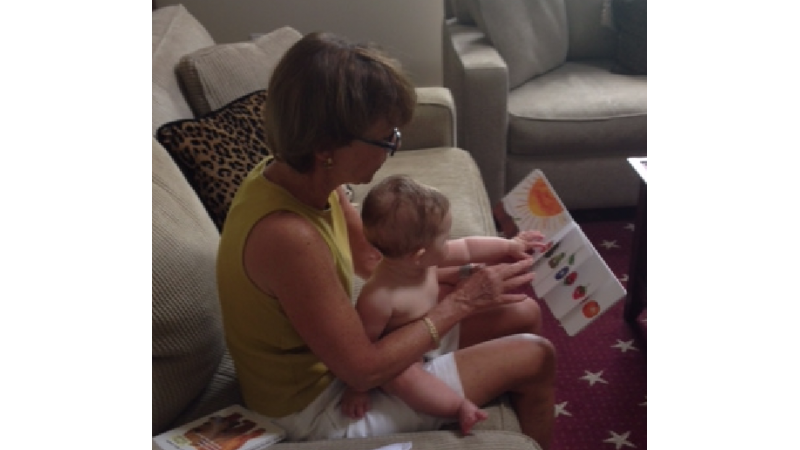 Two weeks ago we announced our support of the new guidelines from AAP to read to children beginning from birth. Julia Graeper wrote about how she does that with her own child. Now, she's back for a follow-up!
Two weeks ago we announced our support of the new guidelines from AAP to read to children beginning from birth. Julia Graeper wrote about how she does that with her own child. Now, she's back for a follow-up!
Although we all now know that we should read aloud to babies and infants, it’s not necessarily obvious why we should. Sometimes, in order to do the right thing, we need good reasons. Something upon which to hang our hats, so to speak!
So I sat down with Francie Alexander, Scholastic’s Chief Academic Officer, and asked her: what are a few really good reasons why we should be reading aloud from birth?
___________
The first reason is the bonding with and through books. Of course, our kids are born into this “tech world,” and we soon wonder: when is the right time for a child to have an iPad or laptop? But we have to remember that the first and most important “laptop” is the parents and caregivers. Books encourage the bonding and closeness with parents and caregivers.
The second reason has to do with the important introduction to the world of language. When we read aloud with babies, they start to hear rhyme. And that’s phonological awareness. They are doing “pre-reading skills” by listening to rhymes, and listening to words that start the same, so it’s technical even though it’s delicious: these sounds just feel good to kids. After six months, babies only keep the phonemes that they can hear well, that they have encountered through reading aloud or talking at home. So this pre-reading starts then.
At this time, they also start to hear differences in sound, both intonation and pronunciation. And when you’re reading them a poem—as opposed to reading a story—they start to hear repetition. They hear the same words over and over again, and realize “Oh! I hear kitten, and kitten again, and dad is always pointing to that picture!” So they begin to focus on the visual and the auditory, and see that the words and the pictures go together. And that’s the alphabetic principle! At its essence, learning to read is knowing that there are the letters of the alphabet, and they all have a sound. They look a certain way, they sound a certain way. This is seeding all of that. I think that’s the reason why the American Academy of Pediatrics said, “Start early! Don’t wait on this!” Because we’re seeding reading.
The next and most important thing that needs to happen is that in a couple of months the baby will grab that book. And they’ll put their mouths on books, because that’s how babies learn about the world! But they’re also getting book-ready. And for many years, that child’s education will be through books. So you’re building language knowledge, word knowledge, and book knowledge.
And so you’re helping your child not experience what’s been well-documented, which is the word gap for kids who haven’t heard and experienced words. And so sometimes the book is also a script. Because although we should be talking to our children constantly (education researchers call this back-and-forth “the dance”), it can be exhausting. So the book gives you a character, a script, an intermediary between this exchange between the parent and child.
What are your thoughts, parents and educators?
Image of baby Maddie with her grandmother Mary via Corey Sullivan Martin



